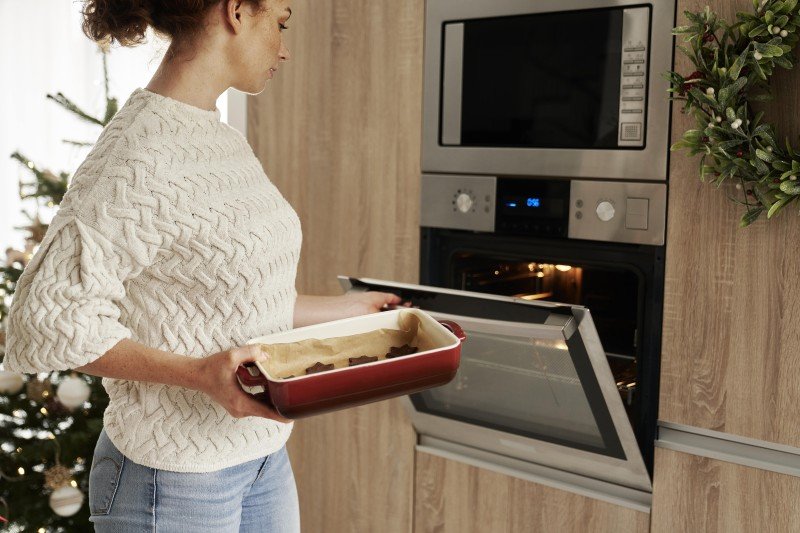10 Unexpected Ovens And Hobs Tips
Understanding Ovens and Hobs: A Comprehensive Guide
Cooking has come a long way given that the days of open flames and simple cooking approaches. Buy Oven Online , ovens and hobs are at the heart of modern-day kitchens, supplying versatility, performance, and an array of cooking choices. Whether you are a newbie cook or a skilled chef, understanding the distinctions, functions, and functions of these appliances is important for making the most of culinary potential. This short article breaks down the various kinds of ovens and hobs readily available on the market, their functionalities, and how to pick the ideal home appliances for your kitchen.
What is an Oven?
An oven is an enclosed space created for heating and cooking food, using numerous methods such as baking, roasting, and broiling. Ovens can be found in various types, each serving special cooking choices and requirements.
Kinds of Ovens
Standard Ovens:
- Use gas or electricity for heating.
- Typically consist of a heating aspect at the top and bottom.
- Suitable for basic baking jobs.
Convection Ovens:
- Use a fan to circulate hot air, promoting even cooking.
- Appropriate for baking, roasting, and reheating.
- Minimizes cooking time and enhances flavor.
Steam Ovens:
- Utilize steam to cook food while maintaining moisture and nutrients.
- Exceptional for health-conscious cooking, such as veggies and fish.
Microwave Ovens:
- Use electromagnetic radiation to heat food quickly.
- Best for reheating leftovers or cooking basic meals.
Wall Ovens:
- Built into the wall, conserving area in the kitchen.
- Readily available in numerous setups, including single or double ovens.
Key Features of Ovens
- Temperature level Control: Precision heating for various baking and preparing procedures.
- Self-Cleaning Options: Some designs have self-cleaning modes that use heats to burn food residue.
- Smart Features: Wi-Fi connectivity allows remote pre-heating, tracking, and recipe management through smartphones.
What is a Hob?
A hob is a cooking surface area, often referred to as a stove or cooktop, where cookware is positioned for heating. Hobs are readily available in various products, sizes, and heating methods, catering to diverse cooking requirements.
Types of Hobs
Gas Hobs:
- Utilize burner for direct flame cooking.
- Deal exact temperature control and are favored by numerous professional chefs.
Electric Hobs:
- Use electric coils or smooth tops.
- Some designs are equipped with induction technology, supplying fast heating through electromagnetic energy.
Induction Hobs:
- Cookware must be made from magnetic products.
- Very energy-efficient, providing quick heat and lowering burn dangers.
Ceramic Hobs:
- Feature a glass-ceramic surface area with heating components underneath.
- Easy to clean but can be less energy-efficient than induction hobs.
Key Features of Hobs
- Burner Configuration: Varies from two to 6 burners, depending upon model and size.
- Power Levels: Multiple settings enable greater accuracy in cooking.
- Safety Features: Options like flame failure gadgets and kid lock settings guarantee safety throughout cooking.
Selecting the Right Oven and Hob
Choosing the right oven and hob for your kitchen includes cautious factor to consider of different elements. Below is a list of questions to direct your choice process:
- What is your primary cooking design?
- Just how much kitchen area do you have?
- What is your spending plan?
- Do you choose gas or electric home appliances?
- Are extra features like smart connectivity essential to you?
Table Summary of Key Differences Between Ovens and Hobs
Feature
Oven
Hob
Functions
Baking, roasting, broiling
Boiling, frying, sautéing
Cooking Method
Enclosed heat
Direct cooking surface
Temperature Control
Adjustable settings
Range settings
Types
Electric, gas, convection, microwave
Gas, electric, induction, ceramic
Cooking Capacity
Larger (can cook multiple meals)
Smaller (focus on immediate cooking)
Cleaning
Self-cleaning options offered
Normally manual cleansing needed
Upkeep Tips for Ovens and Hobs
Proper care and upkeep of your cooking appliances extend their life-span and performance. Here are vital maintenance pointers:
Regular Cleaning:
- Clean the oven interior after each usage to avoid residue buildup.
- Wipe down hob surfaces after cooking to prevent spots.
Examine Seals:
- Ensure the oven door seals are undamaged to keep energy efficiency.
- Change worn-out gaskets and seals as required.
Check Burners and Elements:
- For gas hobs, check for blockages in burners.
- For electric hobs, check coils and surface areas for signs of wear.
Frequently asked questions
Can I utilize any cookware on induction hobs?
- No, induction hobs only deal with magnetic pots and pans, such as cast iron or stainless steel.
What is the most energy-efficient cooking home appliance?
- Induction hobs are usually the most energy-efficient option, utilizing less energy than conventional gas or electric models.
How frequently should I clean my oven?
- It's suggested to clean your oven every few months, or more regularly if you utilize it frequently.
Can I set up an oven and hob independently?
- Yes, both home appliances can be set up separately based on kitchen design and space.
What should I consider when installing a gas hob?
- Guarantee appropriate ventilation and stick to regional security codes. It is suggested to have a professional set up gas home appliances.
Comprehending the functions, types, and upkeep of ovens and hobs can substantially boost your cooking experiences. Selecting the right home appliances tailored to your cooking design, kitchen space, and security needs can make all the difference in attaining culinary success. By being notified about your options, you can enjoy a more efficient and satisfying cooking journey, bringing delicious meals to your table with ease.
